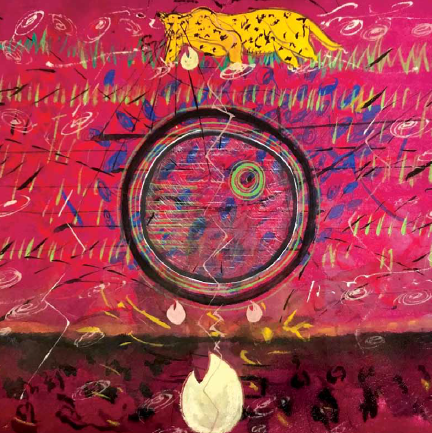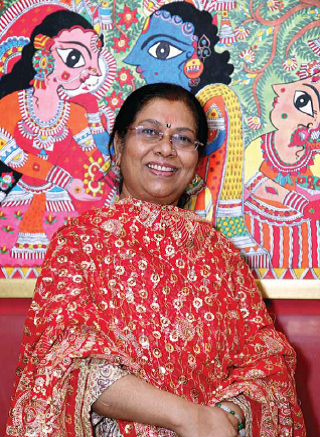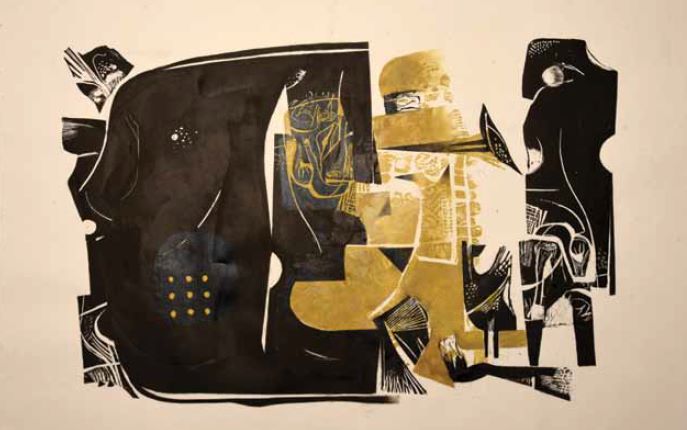
The capacity to see the narrative in the moment and to help to elevate it into meaning is what Sagar Vasant Kamble does to such perfection
 One of the singular inspirations of artist Sagar Vasant Kamble’s artistic life points to art taking the personal and turning it around in such a way so that it reveals the universal. “Art to me is a depiction of my interpretation of things,” says Kamble, born in a farmer’s family at a village in district Kolhapur, Maharashtra. “My work is inspired by my background in farming and the rural community I live and work in,” says the Mumbai-based artist, who came into the national limelight when he won the Lalit Kala Akademi Award, 2020.
One of the singular inspirations of artist Sagar Vasant Kamble’s artistic life points to art taking the personal and turning it around in such a way so that it reveals the universal. “Art to me is a depiction of my interpretation of things,” says Kamble, born in a farmer’s family at a village in district Kolhapur, Maharashtra. “My work is inspired by my background in farming and the rural community I live and work in,” says the Mumbai-based artist, who came into the national limelight when he won the Lalit Kala Akademi Award, 2020.
An alumnus of the Sir JJ School of Art, Mumbai, the much-awarded artist lets his stories unfold in his artwork so that his lived experiences can become a tool for transformation in the lives of others. The capacity to see the narrative in the moment and to help to elevate it into meaning is what he does. In the art that thus comes from life, the hyper local and the universal entwine, so that the unfolding drama happening in a far-off corner can have resonances and reverberate across the politics of the world. “I am compelled to interpret issues like female foeticide, caste and religion, inequality, gender, poverty etc., and express them through my art,” he says. Beauty can be found even in the smallest of things in our country, he says, but social issues, problems and practices still plague us. So, you find his works exploring the culture and traditions of communities and focussing on social issues involving harassment of women, farmer suicides and Devadasis among others.



Currently, he’s exploring different mediums, including sculpture, video art, art installations along with paintings. “This I hope will help me evolve and express what I feel and expand to a bigger audience,” he says. Kamble says India is a very conscious and a sensitive country. Post-independence, the country has been rapidly adopting western theories, evolutions and innovations. But certain sectors of the country are still very much holding on to the roots and this is widely seen in the rural sectors. “These sectors are structures of culture, traditions and aesthetics. Beauty is experienced from the smallest seed. But there is equal reserve ideologies followed in these communities, like male domination, misunderstood feminism, Devdasis etc. As a rurality and a part of this community, I have an urge to interpret this social order in my visual language,” he says.
Kamble understands that his work is to try to call attention to a small moment, but perhaps the most significant thing, happening in a far-off quarter in a busy world. The thing that no-one is noticing. We cannot stop the world, so how do we draw attention to a moment of alteration, that might signify much. “Art to me is a depiction of my interpretation, therefore my paintings have notions of this community. Hence, they are more like an autobiography. Semiotics have been used to depict simple objects, which enhance and give justice to the notion. Snakes, clouds, cactus and other symbols are depicted,” he explains. Our busy, personal perspectives draw us ever onward and, enmeshed in our own lives, we can miss world changing moments that slip by out of sight. But Kamble makes his work the endeavour to pull attention towards the small, unfolding, essential drama that might be otherwise overlooked. “My paintings are close-knit between the culture and tradition of the community and social issues like mental and physical harassment of women, issues faced by farmers and unanswered questions of the Devdasis. Also, we have faced floods which have caused destruction and havoc in my village and the surrounding areas in the last couple of years. I have tried to depict in my paintings the condition of our rural life striving against such natural calamities.” he says.
This “pointing to”, is the stuff of his work, but an alertness to these moments has trained him, and so it is also, the stuff of his work life. He is in some way, always in the painting looking for the event. That is where the ritual and ceremony of making art and making meaning, becomes a useful practice. Even in our most tired, busy and distracted days, there is always the opportunity to turn towards the one small thing that matters. That is the joy of art and life, there is always meaning to be made.









 " >
" >
 " >
" >